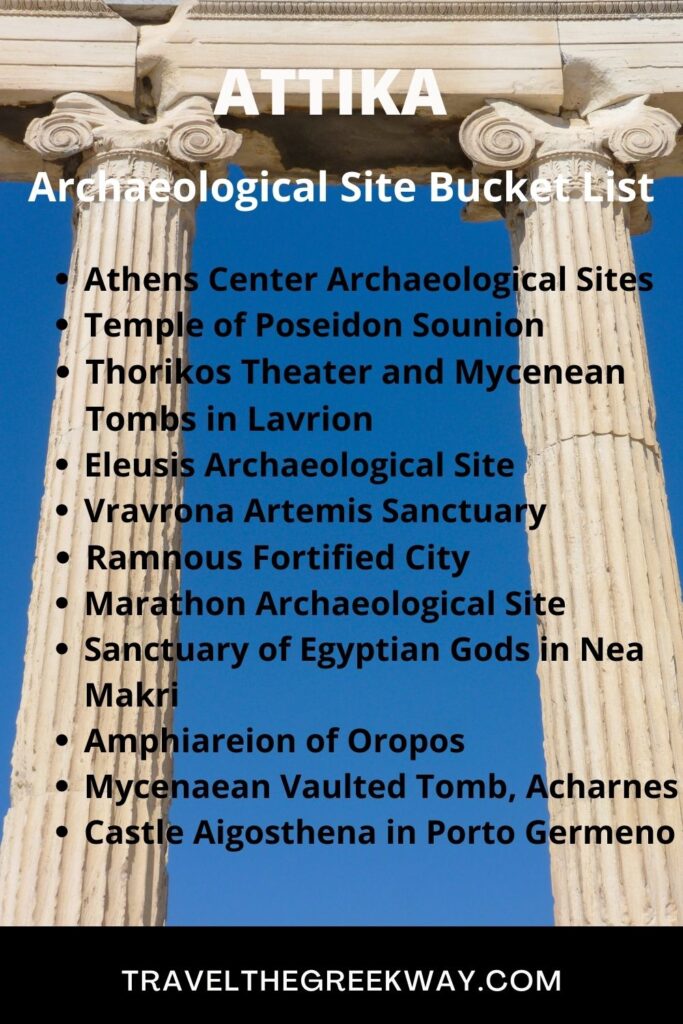The Rhamnous Greece is one of the best-preserved ancient sites – demos of Attica. Demos in ancient Athens were similar to today’s municipality, with police powers and their own property, cults, and officials.
The Rhamnous Archaeological Site (or Ramnous or Rhamnus) covers a large area on a picturesque secluded plateau overlooking the Aegean Sea, 10km from Marathon, and 53km northeast of Athens. Right across from Rhamnous, lies the large beautiful Evia island.
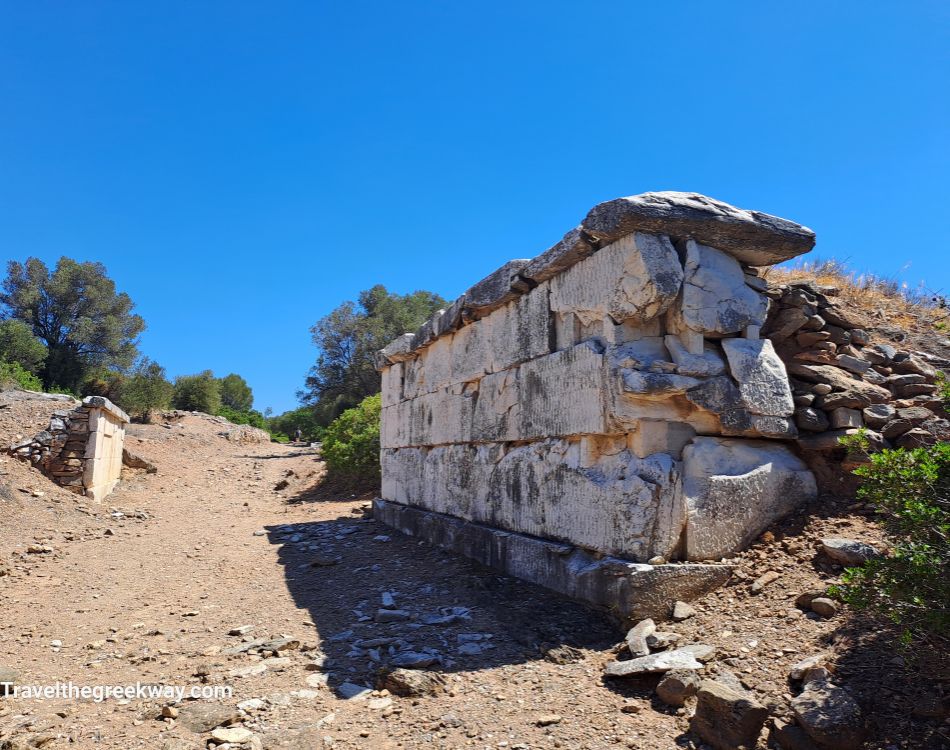
The Archaeological Site has two distinct sections:
- the upper section with the remains of the Doric Temple of Nemesis and Themis and various burial monuments and
- the lower section: a downhill dirt track leads to the impressive fortress that reminds of the Mycenean boulders and the remains of the Rhamnous city. The young Athenian soldiers who manned the local guard were performing their two-year army term there. The fortress included a temple, a gymnasium, and a theatre.
Travel the Greek Way is an Amazon Associate and participant in other affiliate programs. I earn from qualifying purchases. Please see my disclaimer/privacy policy for more information.
My Latest Video for Marathon & Rhamnous Greece
A day trip from Athens visiting the Marathon Dam, a small Byzantine church in the middle of nowhere, the Rhamnous archaeological site, a swim into the nearby Sesi beach, and a short visit to Marathon town.
Why is Rhamnous Greece a Unique Site?

Rhamnous is significant because, unlike many other famous Greek sites like the Acropolis of Athens, where monuments were dedicated to gods, it was a real ancient town. Rhamnous offers a unique glimpse into what Greek cities looked like around 500 BCE.
The Monuments, a Walking Tour
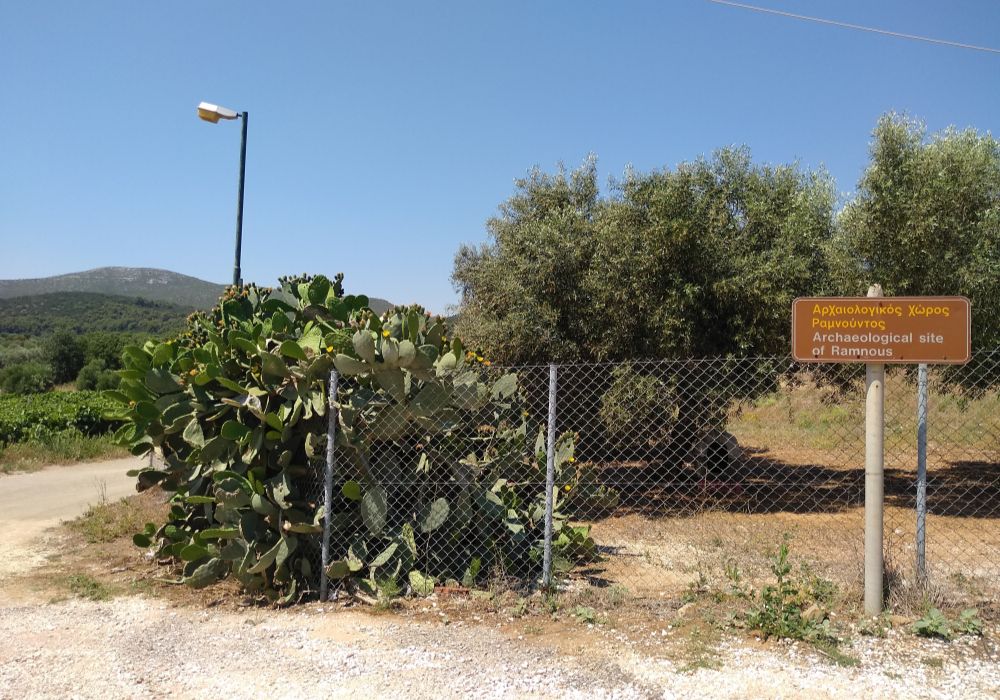
Outside the site, there is a cluster of trees where you can park your car. There is a small kiosk where you will issue your ticket (€4 per adult, €2 for a child), or you could even have free entrance (mostly for EU citizens).
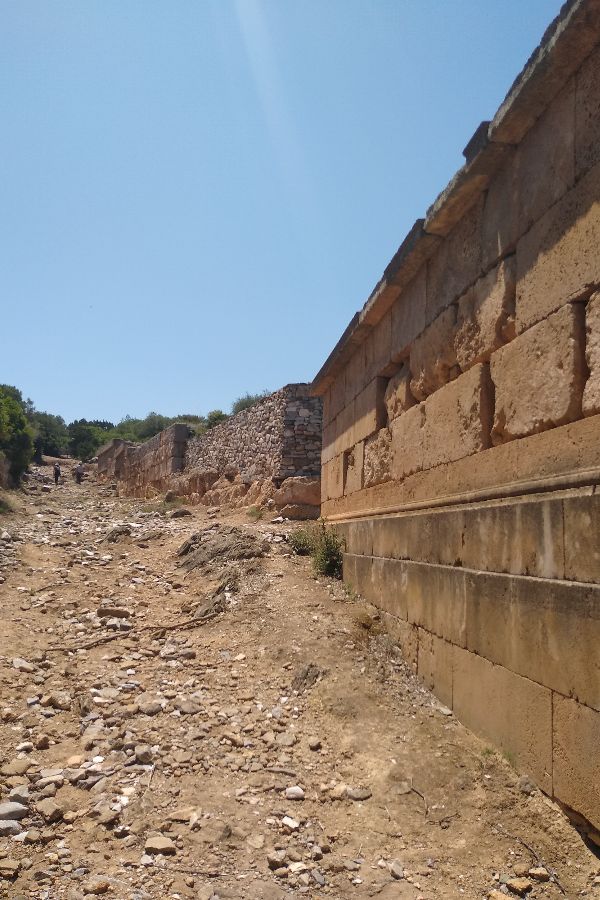
Most of the site is not under tree cover so, if you visit in the summer, it is important to wear a sun protection hat, carry plenty of water, a snack, and apply lots of sunscreen.
Burial Precincts in Rhamnous Greece

As you start walking in the beautiful Attika natural environment of pine, olive trees, and rhamnous bushes you find burial monuments on various conditions on both sides of the road.

The ancient Greeks wanted the tombs to be outside the cities but in “passing places” so that people could see the monuments, and remember and honor the dead.
Only the rich Greeks had the opportunity to erect such monuments, the poor remain, as today, invisible even after death.
Temples of Nemesis and Themis

The two Doric temples – Nemesis and Themis – sit side by side almost in a parallel fashion, but not quite.
Nemesis temple was built between 430–420 BCE, by the same unknown architect who built the Temple of Hephestus in Ancient Agora in Athens and the Temple of Poseidon in Sounion.
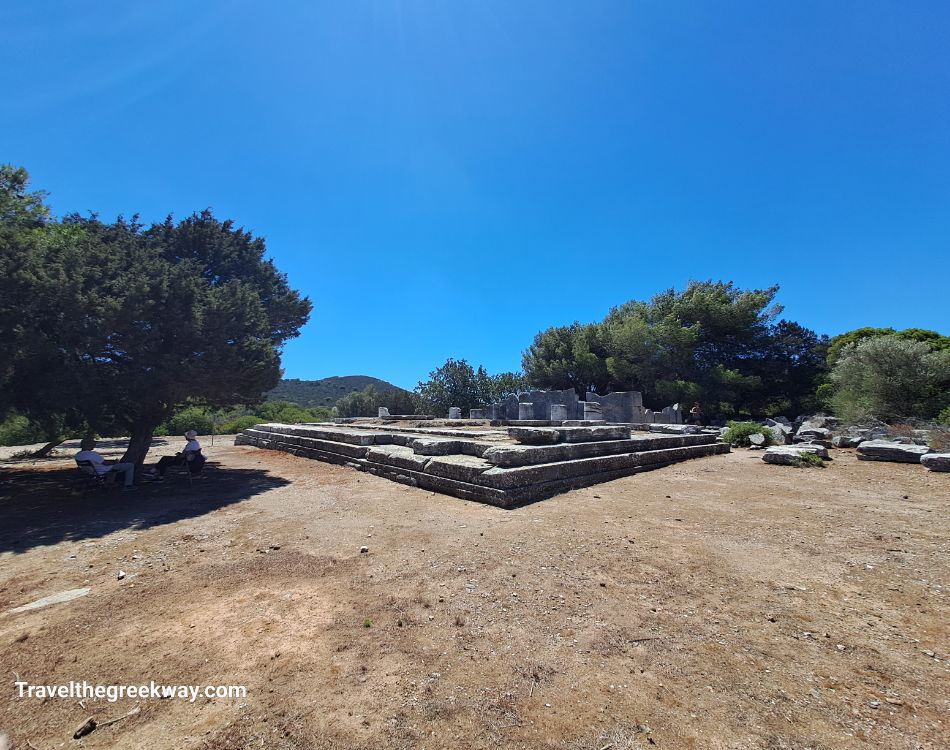
The temple was dedicated to Nemesis, who, after being relentlessly stalked by Zeus, gave birth to Helen of Troy (the Greek wife of Menelaos who left him because she fell in love with Paris, a Trojan prince.
That gave the Greeks the “excuse” to start a war against ancient Troy and take its riches.
This temple is the only one in the ancient Greek world dedicated to Nemesis.
Nemesis goddess: the Hybris Punisher
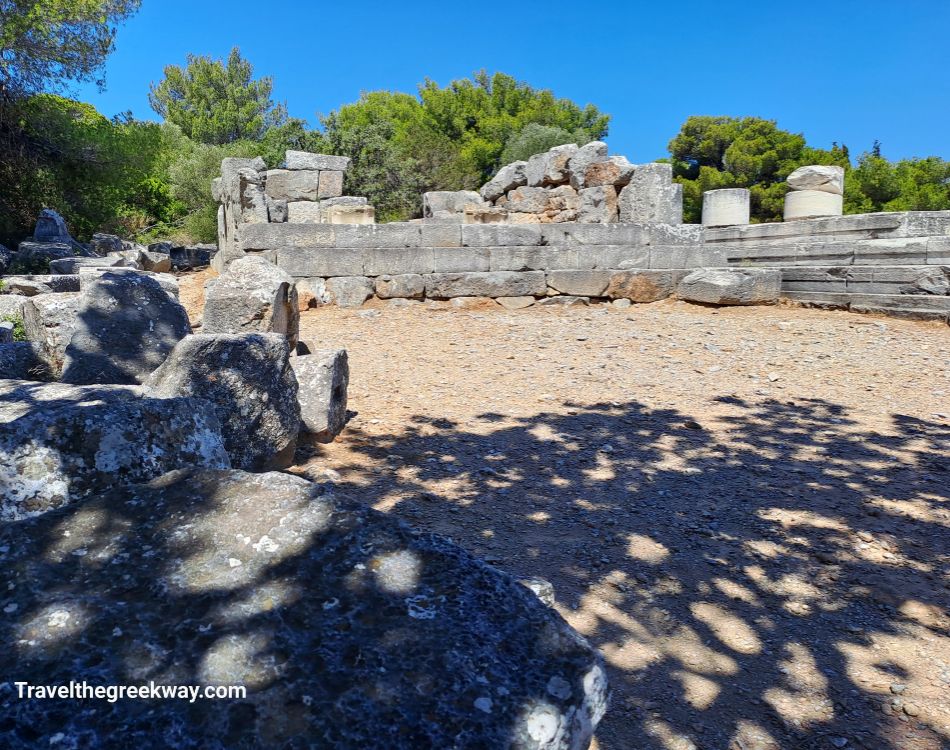
Nemesis was the daughter of Oceanus and Justice, a winged goddess holding a whip or a dagger.
She is present in Greek tragedies, always avenging the crimes committed by humans and the hard punisher of “Hybris”.

Hybris: When someone has excessive confidence and arrogance, believing that he is better than everyone else. Then this person violates the physical order and insults the gods, and there should be some kind of punishment. The word Hybris is still used in a similar context in modern Greek (minus the divine punishment).
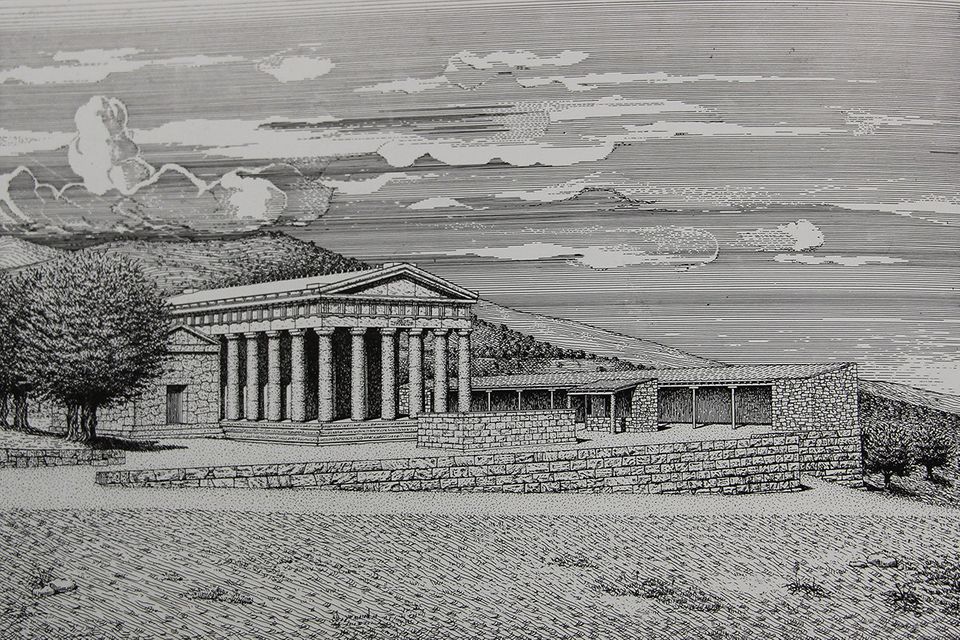
The Nemesis temple in Rhamnous (the larger of the two) was the most significant Sanctuary in ancient Greece.
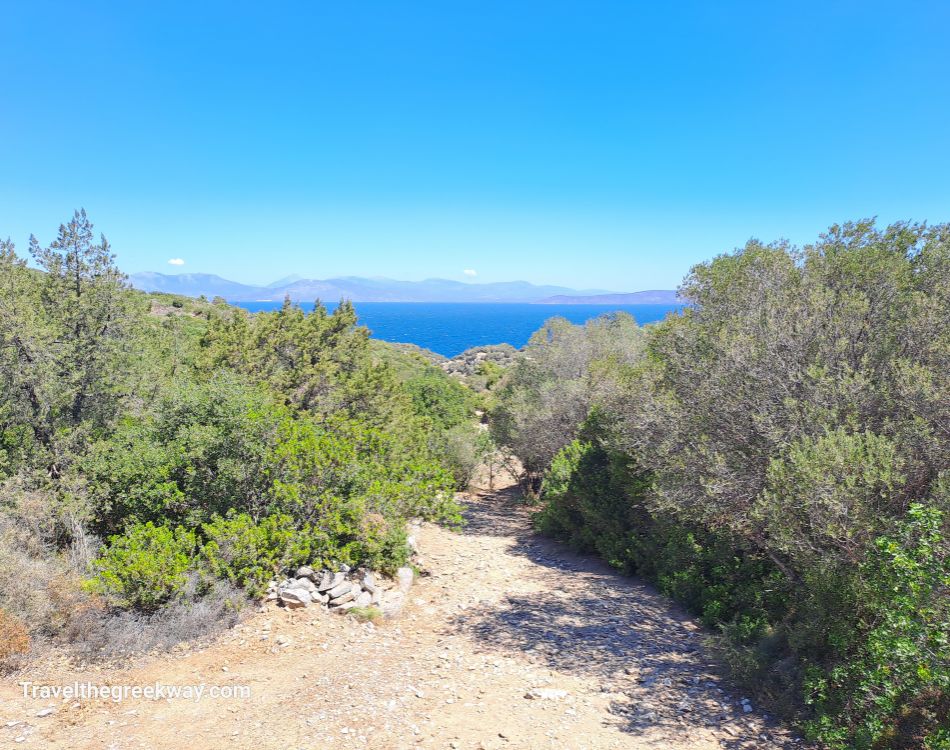
The smaller temple, dedicated to Themis, the goddess of Justice, was first built in the late 6th century BCE.
The excavation team discovered a large 2.22 meters (87 inches) tall statue of Themis, all carved of Pentelic marble (marble used to build the Parthenon).
The Themis statue can be seen in the National Archaeological Museum of Athens.
Rhamnous Fortifications: the Acropolis

As you leave behind you the two temples, you take the downhill dirt road.
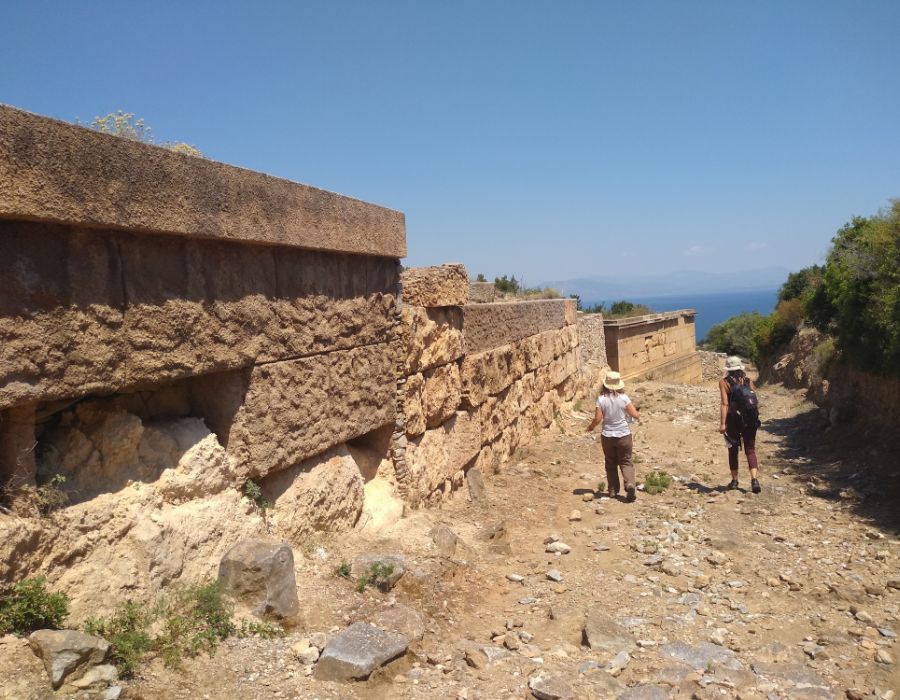
Walls and remains of fortifications accompany you as you descend, offering a dramatic tone to your hiking.
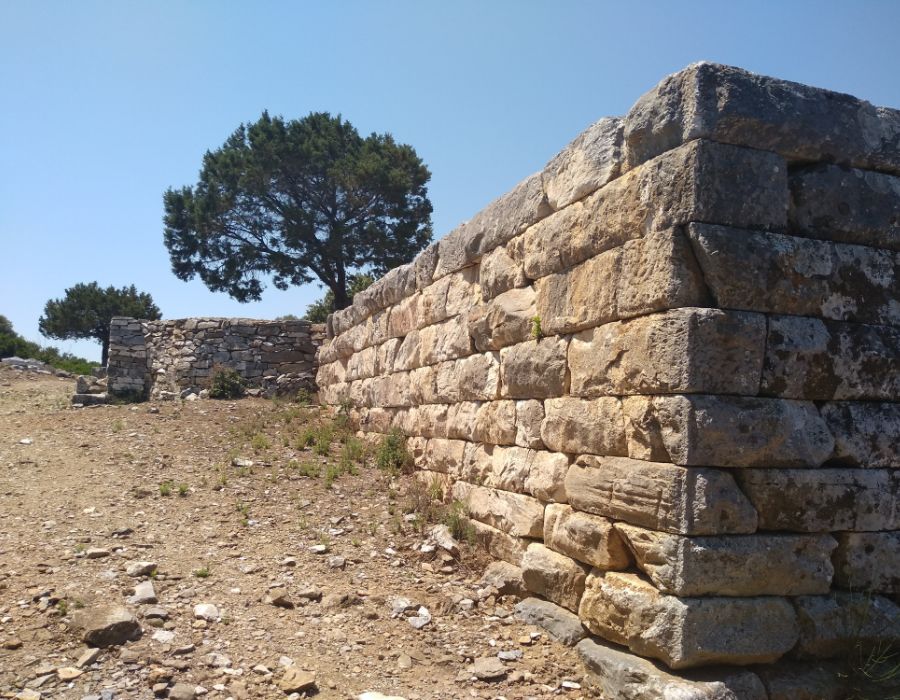
It was a warm summer day when we were visiting the site, so it took us about 15 minutes to reach the entrance for the fortifications and the main town of Rhamnous.
At some point, the terrain was a bit slippery, so I suggest wearing comfortable walking shoes with a grip.
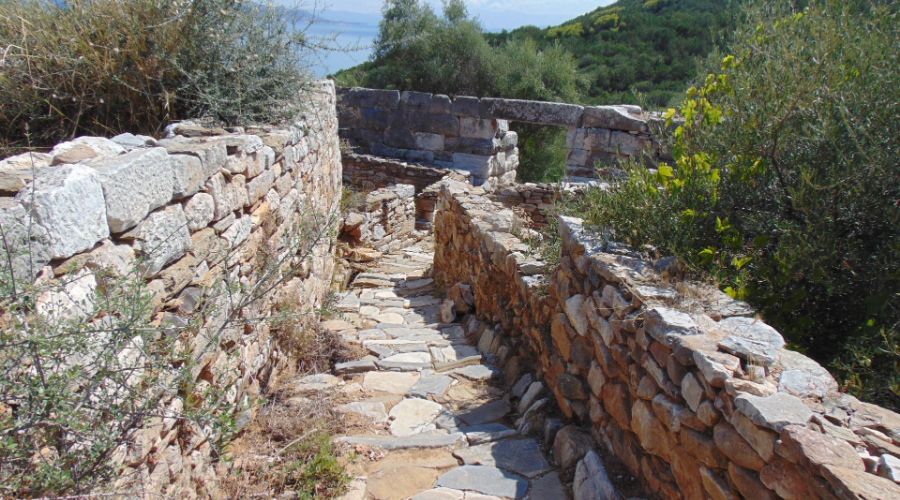
From what the archaeologists know, Rhamnous was a small but wealthy demos, electing just 8 members of the Athens Parliament.
From this, we understand that the population was just a few thousand, including the slaves.
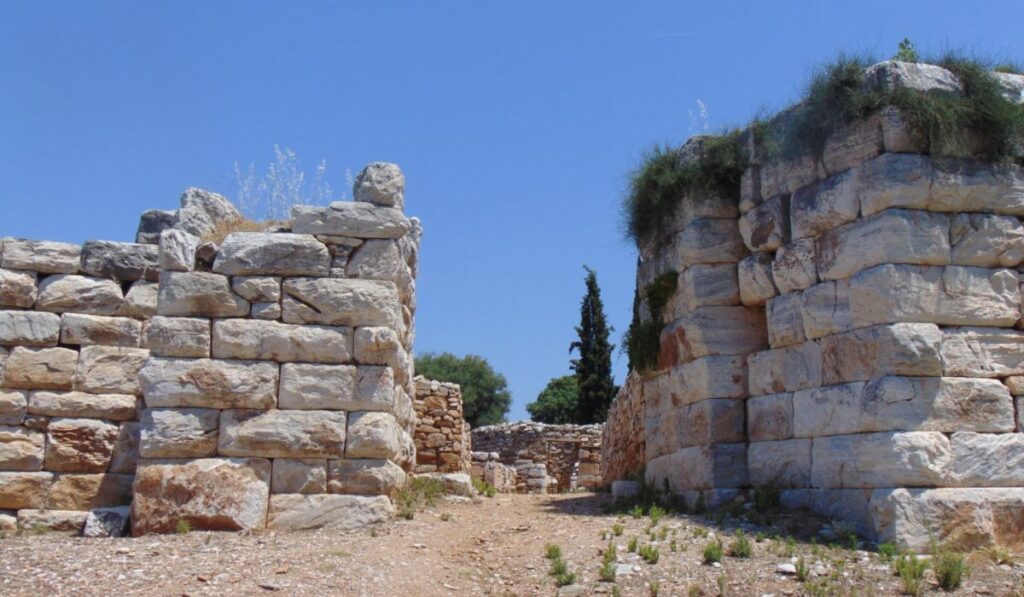
The house’s design inside the settlement was exactly like the ones found in Athens: an open space, a yard, and all around the rooms were set.
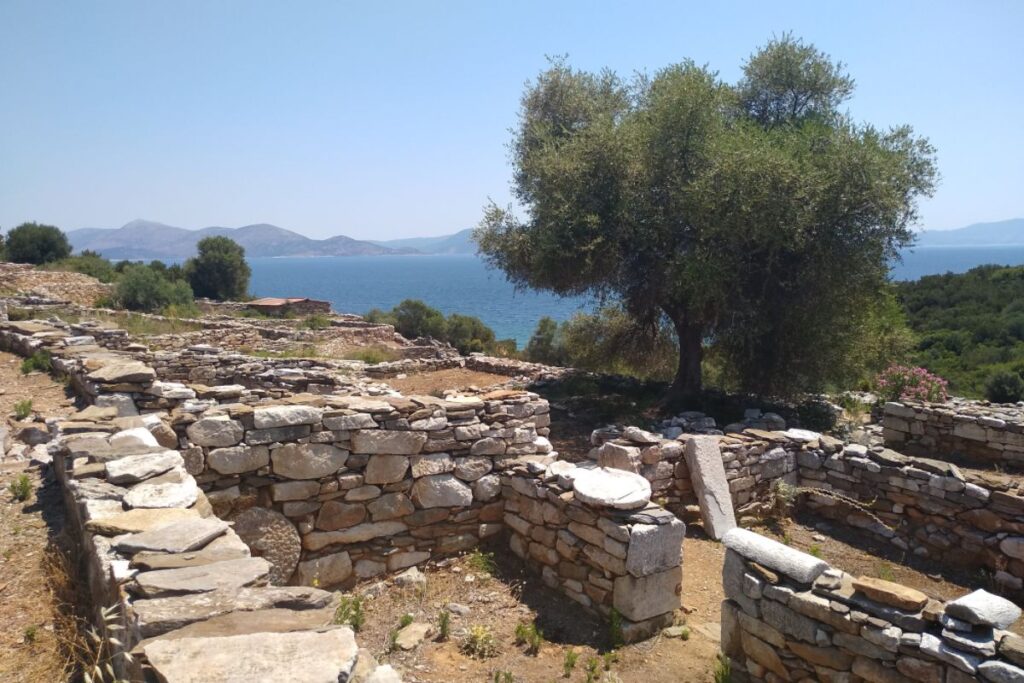
From the fortress, you can see some of the remains of both of the original ports (now silted), the north and the south. The views are magnificent.
Unlike most of the Greek archaeological sites, Rhamnous has no in-house museum.
Some of its precious findings can be seen at the National Archaeological Museum in Athens, while the rest are kept at the conservation building in situ, which can be visited on specific dates.
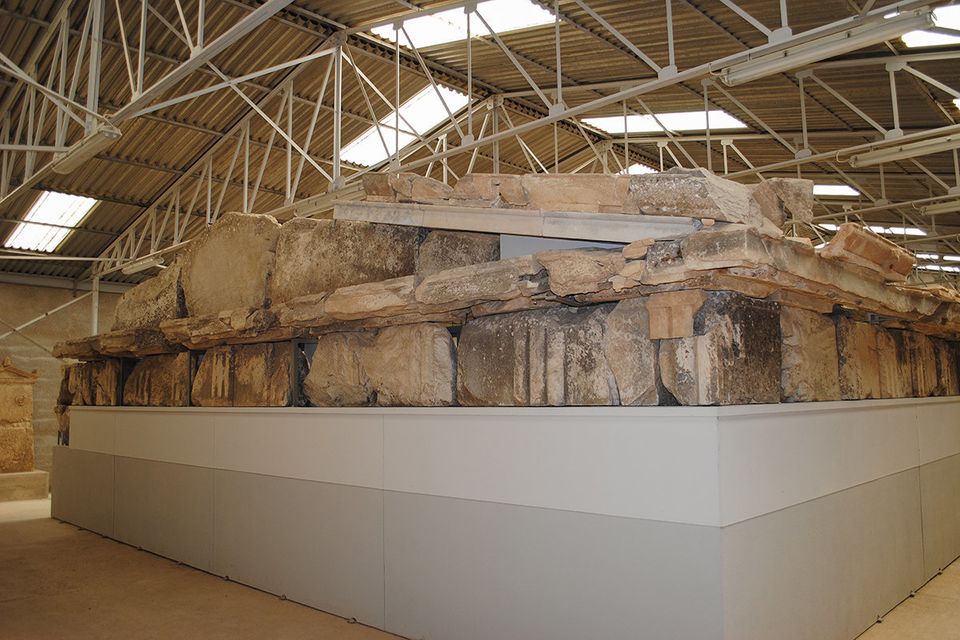
For the time being, there is no information signs about what you see around you while you walk the town, but the Greek Ministry has promised to add them soon. As you walk, you can see intact drainage systems, walls, doorways, streets, sidewalks, and signposts.
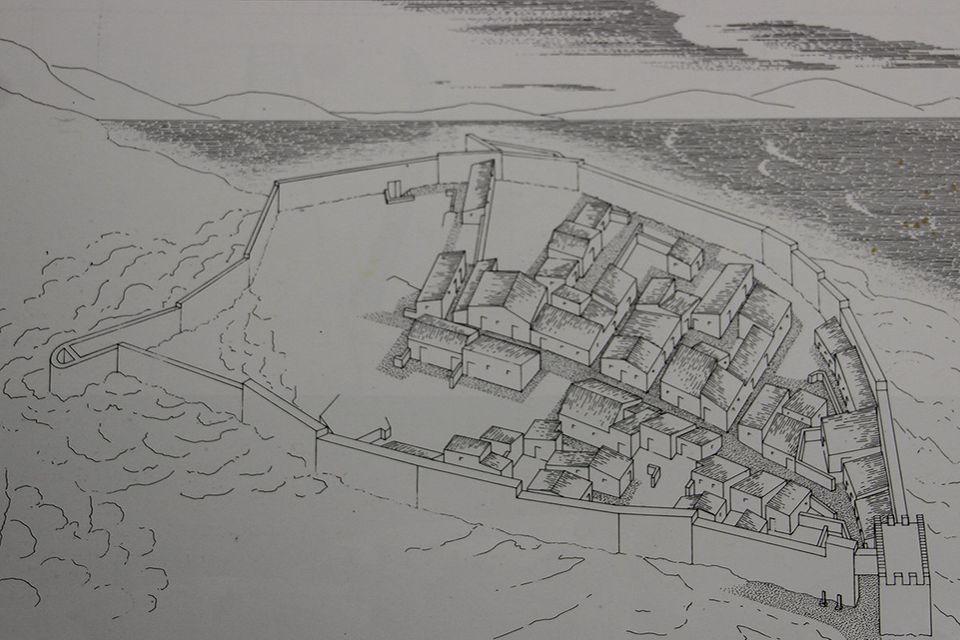
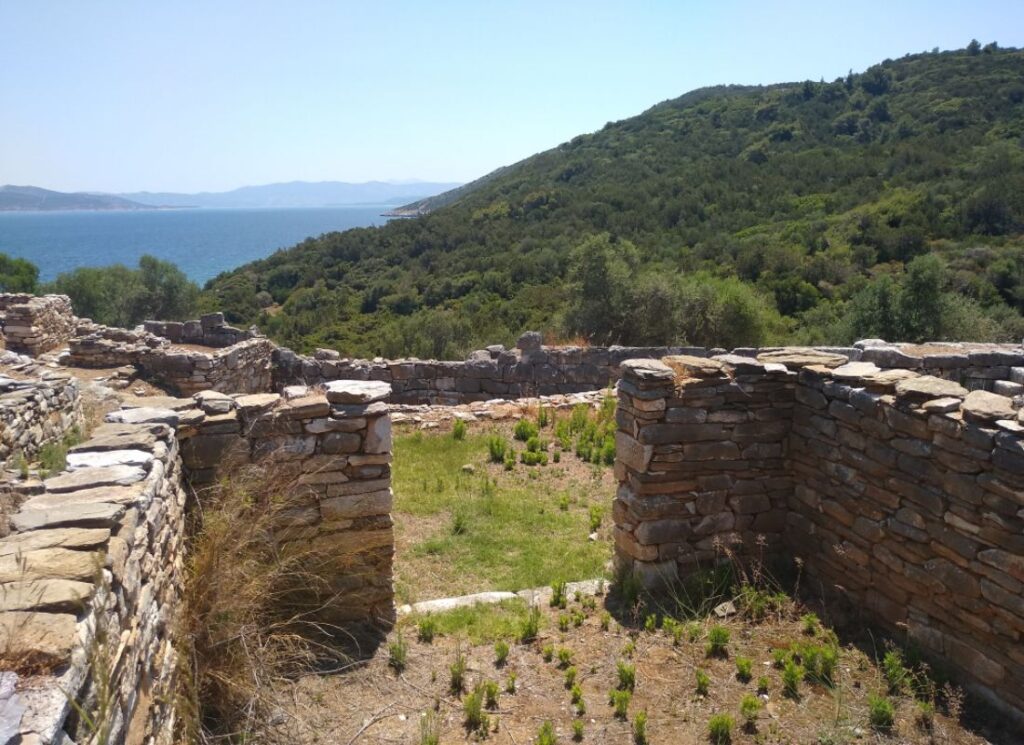
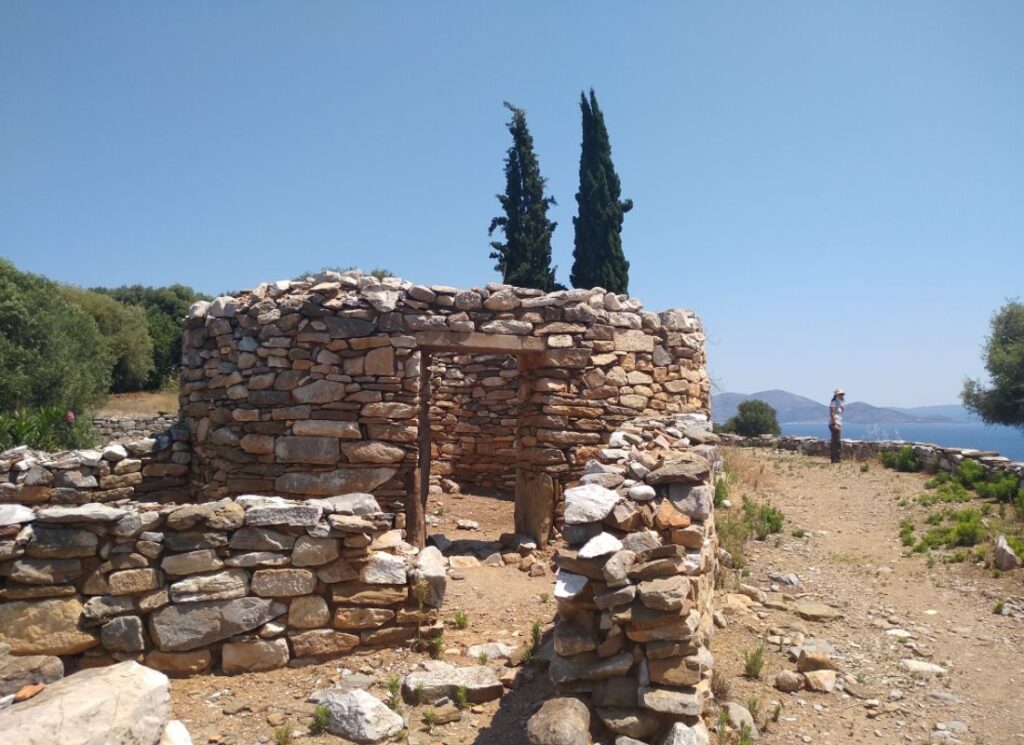

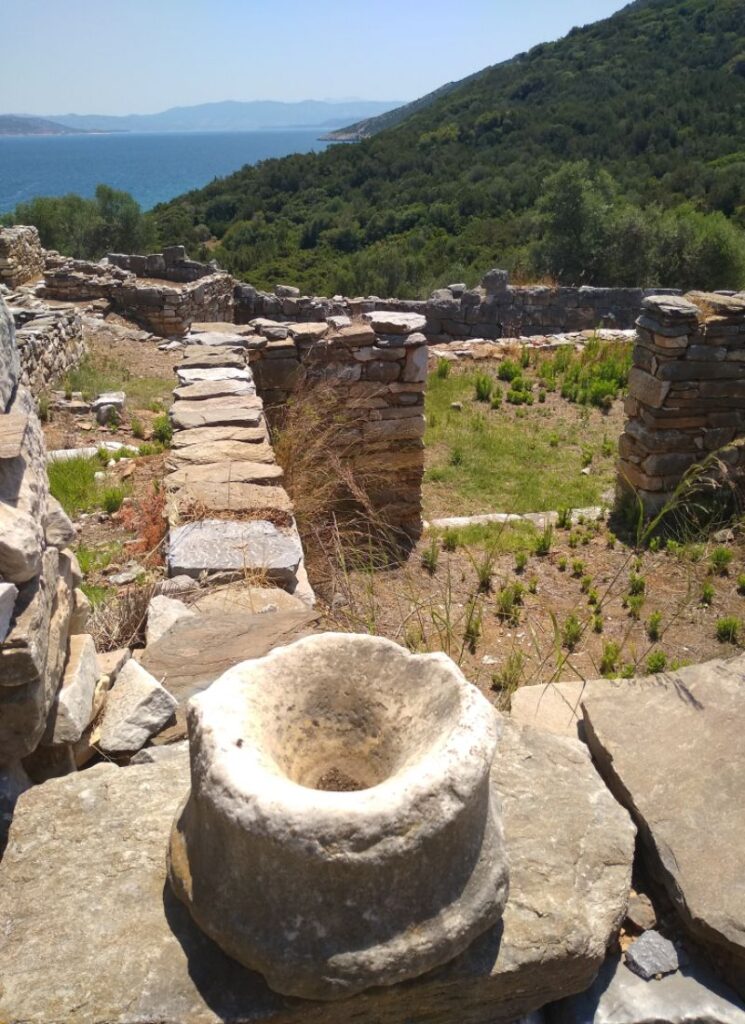



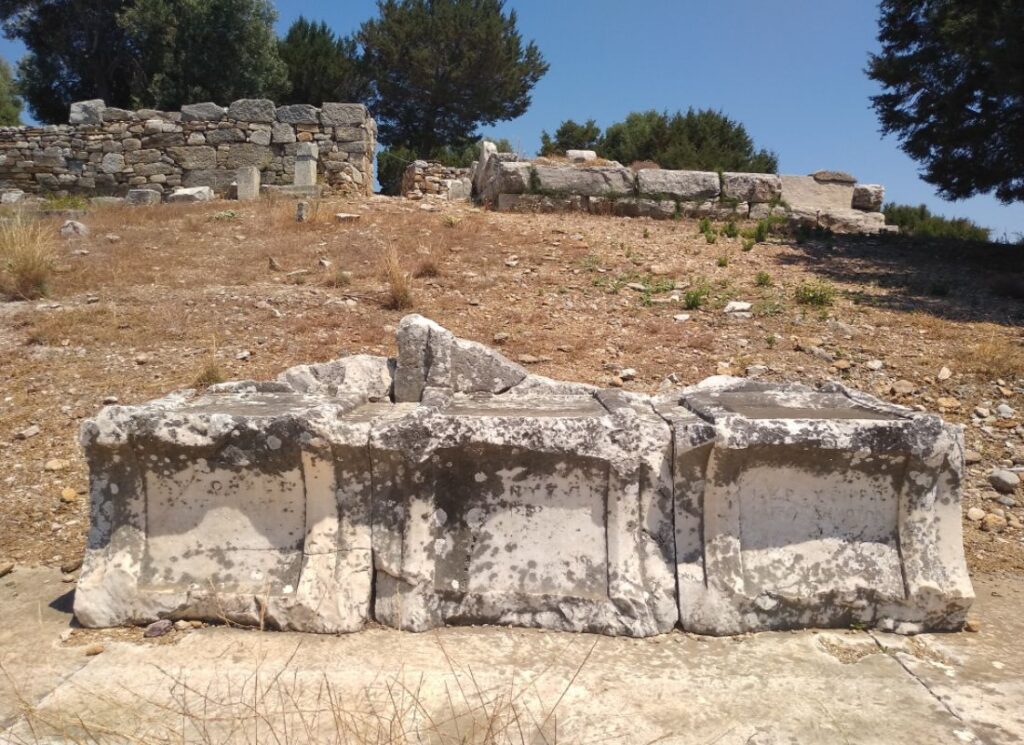
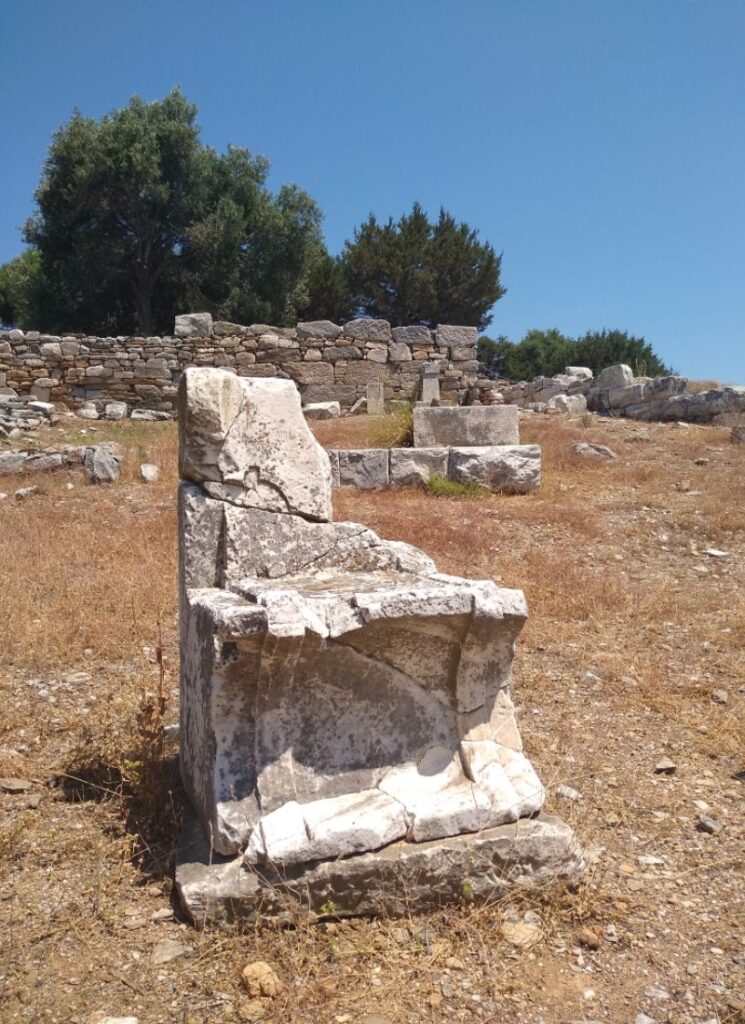
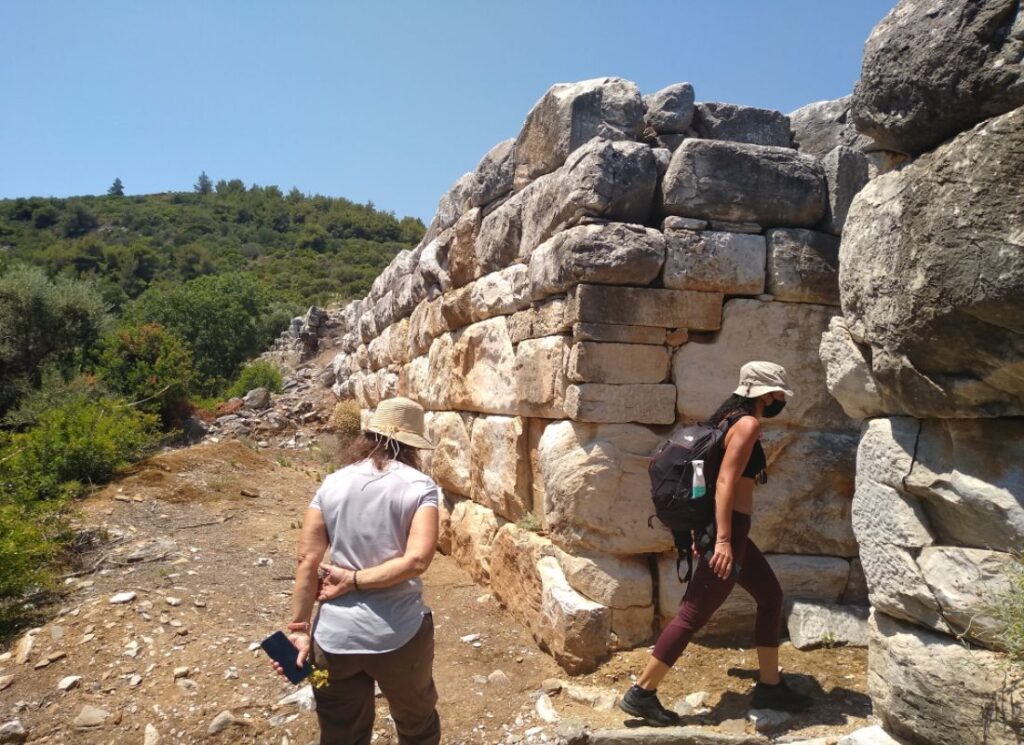
How to Get to Rhamnous

There is no public transport to the site, but you can get the bus to Marathon (Rhamnous is 55 km from Athens) from Pedio Areos in central Athens. From Marathon, it is 20 minutes by taxi.
Take the taxi’s number to let him know when you want to be picked up for the return trip. You should get there early as the site closes at 3.30 pm.
Alternatively, as it is easy to find Rhamnous by car, you can rent a car and upload the route to your GPS, or hire a professional transfer to drive you around the sites. Let me know if you need reliable transfer services, and I can recommend some of the best in Athens.
USEFUL TIPS:
- In winter,r the lower part of the Rhamnous archaeological site is usually closed, so you’d better call them up to check before you visit. +30 22940-63477
- There is very limited information on the site, and a poor internet connection.
- You should wear hiking/good grip shoes.
Other Archaeological Sites in Athens
The center of Athens is dominated by the citadel of the Acropolis Hill, the Ancient Agora, the Kerameikos, the Roman Agora, and the Temple of Olympian Zeus (the largest sites). You can read about the Best Sites in Athens and how to visit them here.
Attika, the region where Athens city belongs, also includes the following unique archaeological sites:
- Marathon
- Sanctuary of Artemis in Vravrona
- Eleusis
- Amphiareio of Oropos
- Sanctuary of Poseidon in Sounion Cape
- Fyli Fortress, in Parnitha Mt
Rhamnous Nudist Beach
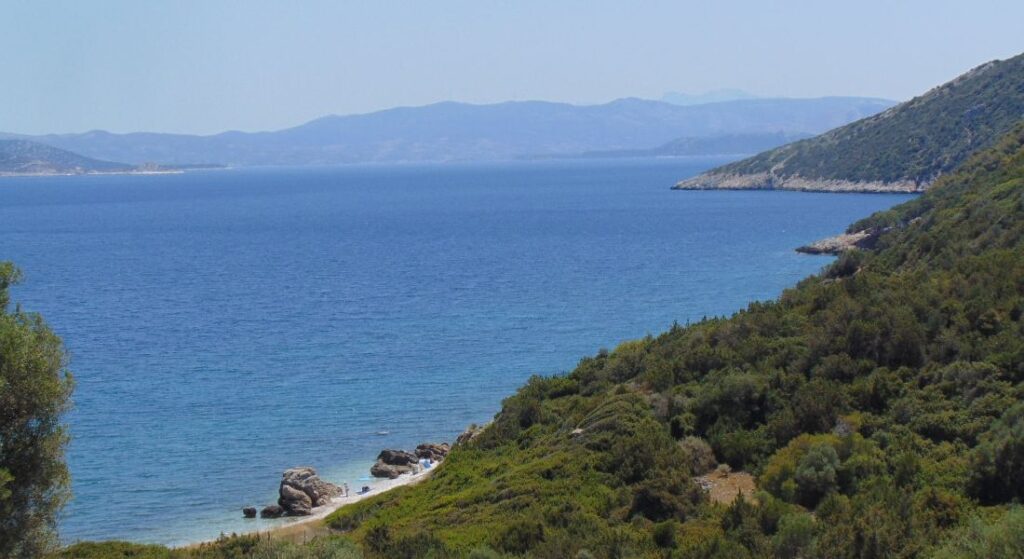
As you stroll the remains of the stunning site, your eyes keep glancing at the beautiful blue of the nearby sea waters.
There is a small bay there, famous in Athens for attracting nudist swimmers. Ask the archaeological staff for guidance on how to get there if you are interested in getting to the beach.
The waters are perfect, crystal clear, but there is no drinking water or food available in the area, so you’d better go there prepared.
Limnionas
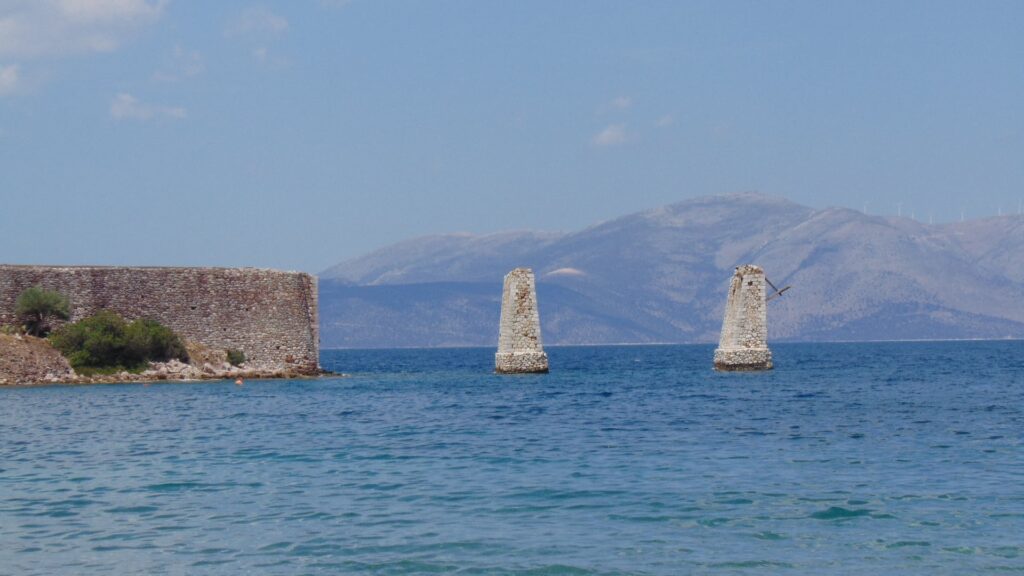
Limnionas is a nearby area to Rhamnous, which used to have iron mines back in 1880 but stopped working around 1920.
The surrounding mining area is closed to visitors as there are still gorges and deep open ridges – over 100 meters.
However, there is a road that one can use that leads to the beautiful beach of Limnionas.
The two Sesi Beaches

Perhaps the easiest and most accessible beaches in the area, with taverns and other facilities, are the Megalo and Mikro Sesi.
Mikro Sesi can get crowded, but it is a beautiful place with trees and a tavern for a well-deserved lunch and a cooling swim after.
FAQs on Rhamnous Archaeological Site
Why was the Archaeological Site in such a remote area?
Athens needed to keep an eye on its most important sea passages at all times.
So in strategically chosen spots, like in Sounion Cape (with the Temple of Poseidon) and Rhamnous, they had built sanctuaries with a fortified Acropolis and an army to protect the whole settlement.
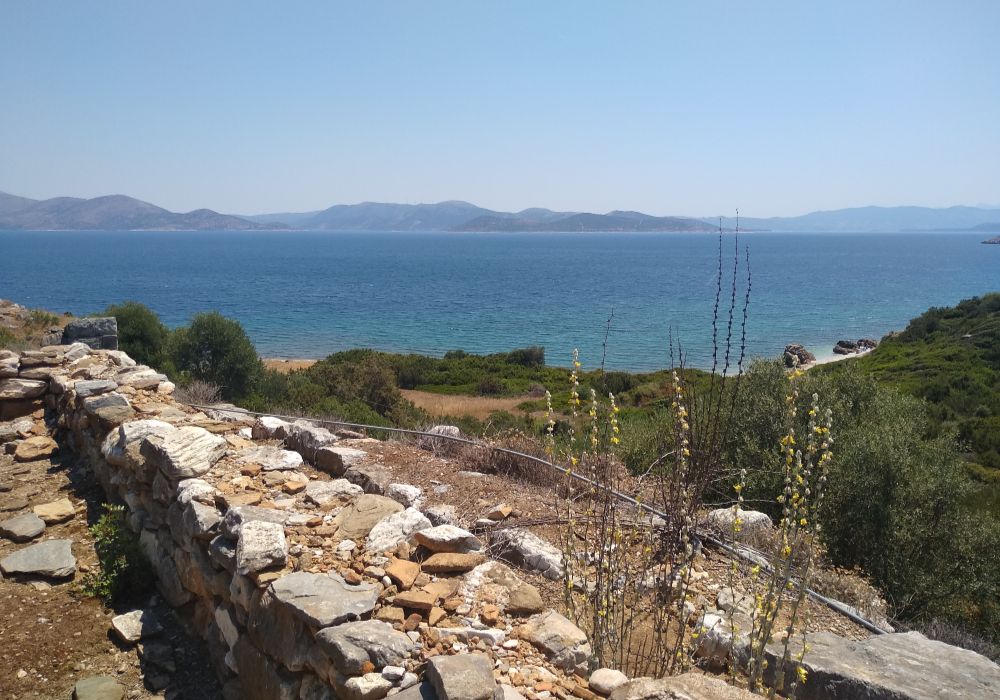
The army was also protecting the area, making sure that Athens would keep getting the necessary grains and other foods, especially during the Peloponnesian Wars.
What does “Rhamnous” mean
Rhamnus is a thorny small tree or bush that used to cover the whole site and can be seen even today on the hills in the area.
What is the Terrain Like?

Just like the Marathon archaeological site, Rhamnous is also surrounded by mountains and hills.
Unfortunately, for the time being, the site has no wheelchair ramp, and the downhill to the fortification is not paved, so if you have mobility issues, the site may be challenging for you.
The ground is dirt with the occasional loose stone, and it requires a normal physical condition.
Test your Knowledge!
- What was the primary purpose of the archaeological site of Rhamnous in ancient times?
- A) Residential settlement
- B) Military fortress
- C) Religious sanctuary
- D) Marketplace
- Which goddess was prominently worshipped at Rhamnous?
- A) Athena
- B) Hera
- C) Artemis
- D) Nemesis
- What geographical feature provided a natural defense for the site?
- A) Dense forest
- B) High cliffs
- C) The river surrounding it
- D) Steep hills
- What significant structure remains well-preserved at the site of?
- A) A theater
- B) A temple
- C) A stadium
- D) A library
- In which century did the site of Rhamnous experience its peak in terms of importance and use?
- A) 5th century BC
- B) 3rd century BC
- C) 1st century BC
- D) 2nd century AD
Answers:
- B) Military fortress
- Rhamnous was primarily a fortified town with strategic importance due to its location.
- D) Nemesis
- The site was particularly famous for its sanctuary dedicated to Nemesis, the goddess of retribution.
- D) Steep hills
- Rhamnous was naturally defended by steep hills, which provided a strategic advantage.
- B) A temple
- The site has well-preserved remains of the Temple of Nemesis.
- A) 5th century BC
- It reached its peak during the 5th century BC, particularly during the classical period of ancient Greece.
Join Our FB Group & Subscribe to My YouTube Channel!
For more travel to Greece tips and beautiful destinations in the Greek islands please join my FREE Facebook Group or SUBSCRIBE to my YouTube & TikTok channels for amazing videos of Greece! Until then happy and safe travels, Evgenia.
How to Get to Athens Port (Piraeus) from Athens Airport

- Bus: If you are arriving at Athens International Airport you can travel straight to the port by taking the X96 express bus (€5.5, children <6 yo, free entrance), which departs every 40 minutes and the average trip lasts 1 hour – runs 24/7.
- Metro: (€9) is easily found across airport arrivals (blue line – M3) going directly to Piraeus port. The average trip to Piraeus lasts 1 hour.
- Taxis are available in front of the airport (around €45 to Athens, €55 to Piraeus (depending on the traffic in Kifisos), and take up to 3 or 4 people with small luggage)
- Rent a car with Discover Cars for reliable, new cars at affordable prices
- You don’t like driving but love hassle-free solutions? Book a Private transfer with an English-speaking driver from Athens International Airport to Piraeus Ferries, or anywhere else in Greece.
Archaeological Sites Bucket List in Attica
My Most Popular Articles
- Greece Packing List – What to pack for a 10-day trip to Greece
- Mamma Mia Greece Locations – All the mainland and island shooting areas in Greece
- Salamina Island – So close to Athens, so unknown to the mass tourism
- Kefalonia Island – Belonging to the Ionian group
- First Time in Greece? All the info you need to know!
Travel to Greece Info
- ‘Hello’ and ‘Thank You’ in Greek: “Ya sou” and “Efharisto”
- Booking.com: I use Booking.com mostly for Europe.
- All-Inclusive Resorts in Greece
- FerryScanner to book ferries to the Greek Islands
- Rent an Affordable Car in Greece
- Athens Metro Website (timetables and ticket info)
- Trains (Hellenic Train)
- Public Buses KTEL
- Get Your Guide: For all your day or multi-day tours and city guide needs, I use Get Your Guide
- Emergency Numbers Anywhere in Greece: AMBULANCE 166 – FIRE 199 – POLICE 100– EMERGENCY NUMBER 112

